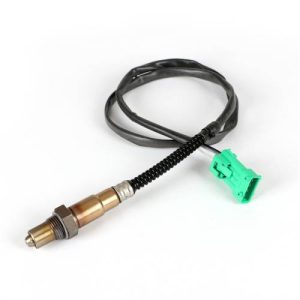Your cart is currently empty!
How long is the life of the oxygen sensor? What determines the life of the oxygen sensor?
As a proficient automotive news writer, we delve into a fundamental aspect of your vehicle's emission control system - the Life of the Oxygen Sensor. In this article, we explore the factors that influence the longevity of this critical component and provide insights into the intricate world of automotive sensors.

How Long is the Life of the Oxygen Sensor?
The life of the oxygen sensor is a crucial consideration for vehicle owners. On average, oxygen sensors are designed to last between 30,000 to 100,000 miles. However, this range is influenced by various factors, including driving conditions, fuel quality, and sensor type.
What Determines the Life of the Oxygen Sensor?
Driving Conditions: Aggressive driving, stop-and-go traffic, and frequent short trips can accelerate sensor wear. Long highway drives, on the other hand, provide a more consistent environment for the sensor, potentially prolonging its the life of the oxygen sensor.
Fuel Quality: The quality of fuel used plays a significant role in the life of the oxygen sensor. Poor-quality fuel can lead to the accumulation of deposits on the sensor, affecting its accuracy and efficiency.
Exhaust Gas Composition: An oxygen sensor exposed to high levels of contaminants and impurities in the exhaust gases might degrade faster. A healthy engine produces fewer emissions, which can extend the life of the oxygen sensor.
Sensor Type: Modern vehicles often come equipped with advanced wideband oxygen sensors that are more durable and accurate than older narrowband sensors. These sensors can have longer lifespans due to their enhanced design.
Maintenance: Regular vehicle maintenance, including addressing engine issues promptly and adhering to recommended service intervals, can contribute to a longer the life of the oxygen sensor.
Prolonging the life of the oxygen sensor
Use High-Quality Fuel: Opt for reputable fuel stations that provide cleaner and better-quality fuel to minimize deposits on the sensor.
Avoid Aggressive Driving: Smooth driving habits reduce stress on the sensor and other engine components, potentially extending their lifespan.
Regular Maintenance: Adhere to your vehicle's recommended maintenance schedule. A well-maintained engine is less likely to stress the oxygen sensor.
Conclusion
In conclusion, the life of the oxygen sensor is influenced by a myriad of factors ranging from driving conditions to fuel quality. By understanding these determinants and adopting proper maintenance practices, you can prolong the life of the oxygen sensor and ensure your vehicle's emission control system operates optimally. As responsible vehicle owners, we have the power to influence sensor longevity through conscientious driving and maintenance choices, contributing to both performance and environmental responsibility.






Leave a Reply